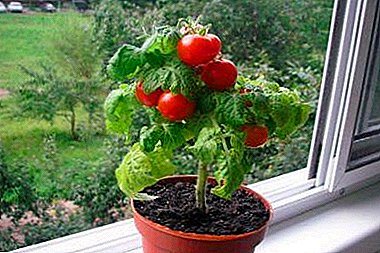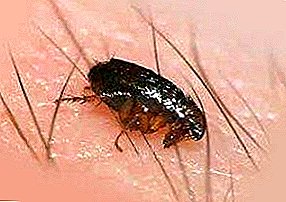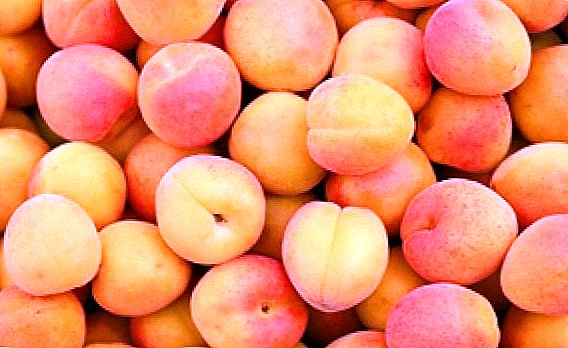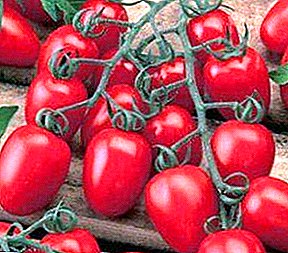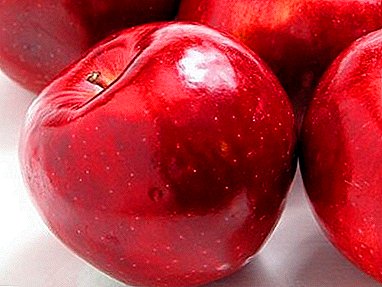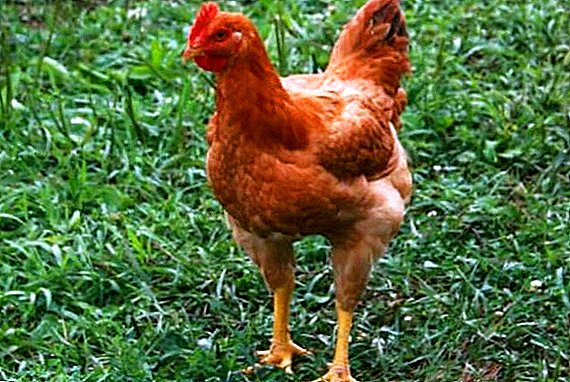 Among broiler breeds, the choice of farmers and poultry farmers often falls on colored broilers, which differ in their higher fleshiness and precocity. One of these varieties is the French breed Sasso. In addition to high rates of weight gain and growth, Sasso chickens are picky in their food, and their meat is often compared to game meat in taste and nutritional value. Numerous advantages of this breed explain its popularity among poultry farmers - we consider them in the article.
Among broiler breeds, the choice of farmers and poultry farmers often falls on colored broilers, which differ in their higher fleshiness and precocity. One of these varieties is the French breed Sasso. In addition to high rates of weight gain and growth, Sasso chickens are picky in their food, and their meat is often compared to game meat in taste and nutritional value. Numerous advantages of this breed explain its popularity among poultry farmers - we consider them in the article.
Breed breeding
The breed was born relatively recently (about 35 years ago) due to persistent and painstaking selection work. Its homeland is France. Since the breeding of the breed, it has gained immense popularity in its territory and has been grown there on an industrial scale.  Outside France, Sasso chickens are also bred, but their numbers are much more modest than at home.
Outside France, Sasso chickens are also bred, but their numbers are much more modest than at home.
Description and characteristics
Chickens and roosters of this species have a characteristic appearance for meat breeds, they are not aggressive and friendly.
Check out the list of the most meaty breeds of chickens. Learn also about the peculiarities of keeping such breeds of hens as Cornish, Dorking, Jersey giant.
Next, we consider in more detail the exterior and character of the breed.
Appearance and physique
In general, the breed has a rather mediocre and typical appearance for all broilers. The head is small, decorated with small earrings and a comb of red, the beak is yellow. Eyes are colored amber, red or orange depending on the plumage.
Did you know? In chickens, there are about 30 different audio signals for communication. With different sounds, they report that they have laid down or are about to lay an egg, have found tasty food, or are ready to mate.
Build a powerful, large, squat. The back is flat, chest and abdomen well pronounced, bulging. The legs are low, thick, set wide apart, the skin color is yellow. The color of the plumage can be red, black, fawn and white, but the most common is red.  The plumage is quite hard, dense, well-fitting to the body, thanks to which these birds can tolerate even sub-zero temperatures, unlike most broiler breeds.
The plumage is quite hard, dense, well-fitting to the body, thanks to which these birds can tolerate even sub-zero temperatures, unlike most broiler breeds.
Important! For feathery Sasso breeds, genetic resistance is typical, that is, the chicks inherit all the parental characteristics.
Temperament
Chickens breed Sasso different calm, docile, peace-loving disposition. But the disadvantage of such a peaceful nature is excessive fearfulness and susceptibility of birds to stress. If the breed is grown not only for meat, but also for eggs, low resistance to stress may adversely affect productivity.
But in most cases, this breed is bred to produce tasty, dietary meat, and the fearfulness of birds does not affect the weight gain.
Find out how useful and how much calorie chicken meat.
Hatching instinct
Like other hybrid breeds of chickens, in Sasso, the instinct of brooding is poorly developed. Even if the hen begins to hatch eggs, it often does not finish what has been started, which leads to the death of the chicks. The most common breeding method for chickens Sasso is incubation. 
Performance Indicators
Egg production in chickens is rather low, especially in comparison with modern, highly productive species, but the great advantage of these birds is in their rapid weight gain.
Main productive indicators of Sasso chicken breed:
- The maximum weight of a rooster is 5 kg.
- The maximum weight of a chicken is 4 kg.
- Egg production - up to 120 pcs. in year.
- Egg mass - 55-60 g.
- The color of the shell - various shades of white and beige.
- Earliness - occurs at the age of 4-5 months, sometimes delayed up to 8 months.
It is also worth considering separately the indicators of weight gain by chickens of this breed. It is noteworthy that a quick weight gain occurs even in the absence of chemical stimulants. The average daily weight gain is about 60 g.  The young of the breed in question is very ready to be slaughtered very early - at the age of 70–80 days some tall individuals can weigh 2.5–3 kg.
The young of the breed in question is very ready to be slaughtered very early - at the age of 70–80 days some tall individuals can weigh 2.5–3 kg.
Learn about the technology of slaughter and processing of chickens, as well as learn how to nibble at home, how to quickly and correctly pluck a broiler.
Feeding ration
Modesty in the consumption of feed is another indisputable advantage of the breed, which makes growing it economically profitable and very profitable. But, despite the small amount of food consumed, the diet of chickens should be complete and balanced, especially at an early age.
Chickens
Ready-made combined feeds are an excellent solution for feeding small broilers - they consist of several lines (starting, fattening, finishing) created for different ages of birds, and, accordingly, contain the optimal amount of nutrients depending on the needs of the birds.
In addition, production feeds often already contain preventive substances. However, the cost of the finished product is rather big, because for many poultry farmers the best option is to prepare dry fodder and mash.  In the first days of birth, chickens are fed with chopped, hard-boiled egg mixed with millet. Starting from the third day, the diet can be expanded by adding chopped grass and seedlings. From the fifth day cottage cheese and sour-milk products are introduced. After a couple of days, you can enter chopped or grated vegetables.
In the first days of birth, chickens are fed with chopped, hard-boiled egg mixed with millet. Starting from the third day, the diet can be expanded by adding chopped grass and seedlings. From the fifth day cottage cheese and sour-milk products are introduced. After a couple of days, you can enter chopped or grated vegetables.
It will also be useful for you to learn how to raise and maintain broiler chickens at home, how to distinguish a broiler chicken from a normal one, how to feed broiler chickens correctly.
At three weeks of age, the ration is expanded by adding whole grains, egg shells, shell rock, meat and bone and fish meal. At the age of one month, the diet of small broilers will be the same as in adult chickens.
The frequency of feeding at the initial stage is 8 times a day, two weeks old birds are fed 6 times a day, for the next week 4 times a day, then reduced to morning and evening feeding. It is important to ensure that the chickens are always full.
Adult chickens
In most cases, broilers do not live to adulthood, since from 60-80 days, when they are fully formed, and their weight reaches a peak, the birds are sent for slaughter. If for any reason you keep broilers more than this period, it is necessary to correctly prepare the ration of birds. 
You can prepare the mixture for feeding yourself from the following ingredients:
- 400 g of chopped corn;
- 200 g of crushed wheat;
- 100 g of ground barley;
- 50 g chopped oats;
- 150 g of sunflower oilcake;
- 200 g low-fat cottage cheese;
- 60 g of fish / meat and bone meal;
- 1/2 tsp baker's yeast.
- 150-200 g sour milk or whey.
Important! No way to feed chickens rice and buckwheat raw. These types of cereals for birds be sure to boil.
Take care of drinkers, as for small broilers and for adult chickens, the constant presence of fresh drinking water is mandatory.
Content Features
Most often broilers contain cellular or outdoor method.  If you are planning to slaughter a bird to reach peak weight, use cells wisely. If the Sasso breed is contained to receive meat and egg products, the bird should be placed in a chicken coop with the possibility of walking.
If you are planning to slaughter a bird to reach peak weight, use cells wisely. If the Sasso breed is contained to receive meat and egg products, the bird should be placed in a chicken coop with the possibility of walking.
Did you know? The size and color of the cockscomb play a key role for the chicken when choosing a marital partner. I can heart mate with many males, but their bodies "take" the sperm of only the best partner with the most appropriate genetic material.
In the house with a walking range
The house should be equipped according to all requirements for broiler chickens:
- The temperature should be within + 17-20 ° C.
- The floor temperature should be in the range of + 25-30 ° C.
- No drafts are allowed.
- There should be a good ventilation system to prevent the accumulation of carbon dioxide, sulfuric and ammonia gases, dust, stuffiness. If you can not build one, you need to regularly ventilate the room.
- It is necessary to strictly comply with sanitary conditions. Cleaning and disinfecting the house should be carried out weekly with bedding replaced. Straw, hay or sawdust is used as litter.
- Room humidity should be between 50-65%.
 An optimal microclimate will help avoid many pathological conditions of birds, including infectious diseases of the respiratory and digestive organs, a poor set of muscle mass, low appetite, etc. Walking the bird should not be long, and the territory is spacious.
An optimal microclimate will help avoid many pathological conditions of birds, including infectious diseases of the respiratory and digestive organs, a poor set of muscle mass, low appetite, etc. Walking the bird should not be long, and the territory is spacious.Otherwise, broilers will gain weight very poorly, grow slowly, and their meat will become more rigid. In this case, the meaning of growing meat breeds disappears.
When arranging a broiler house, you need to think about the density of the population:
| Age of bird (days) | Quantity per 1 square. m |
| 1-5 | 22-30 |
| 10 | 20 |
| 20 | 17 |
| 30 | 13 |
| 40 | 10 |
| 50 | 6-7 |

In cages
Cellular mode of maintenance is also common. In this case, the density of cell colonization remains the same as with the floor content. Microclimate parameters also do not change.
However, when the cellular content of the birds do not have the possibility of walking, resulting in a better and faster to grow, gain weight, and the meat retains juiciness and tenderness.
Advantages and disadvantages of the breed
Breed of colored broilers Sasso occupies a leading position in popularity among poultry farmers, and the following advantages are explained by this:
- simplicity of content;
- high survival rate of young stock (up to 98%);
- relatively strong immunity and health;
- low cost of day-old chicks;
- quick weight gain;
- unpretentiousness in the diet and economical consumption of feed.
 It is economically profitable to grow the described variety of chickens both for sale and for own consumption. During the summer season, from a herd of 30 heads you can get about 100-150 kg of dietary, tasty and healthy meat for the winter for the whole family.
It is economically profitable to grow the described variety of chickens both for sale and for own consumption. During the summer season, from a herd of 30 heads you can get about 100-150 kg of dietary, tasty and healthy meat for the winter for the whole family.The minus of Sasso broilers is a bad breeding instinct and low egg productivity. However, given their rapid weight gain, it is impractical to grow these birds for egg production.


